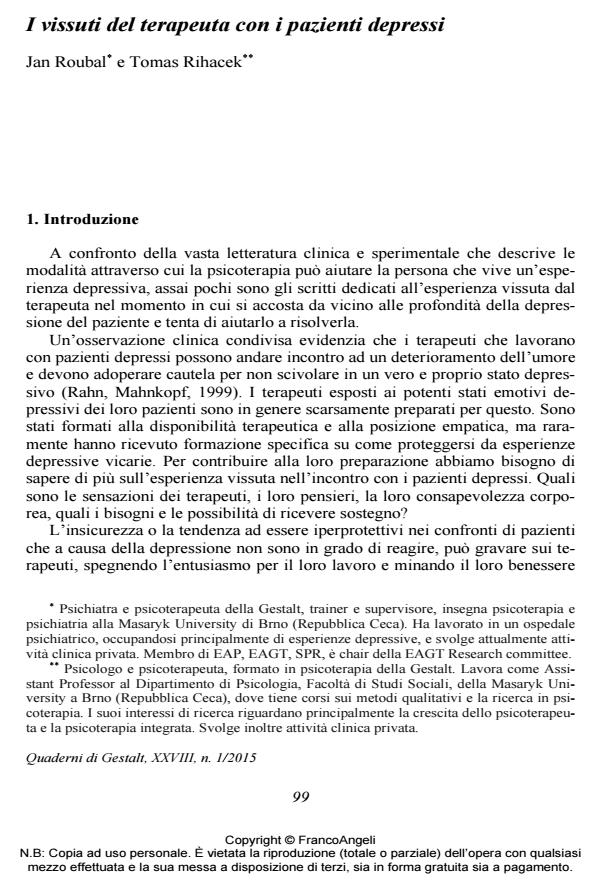Therapists’ Experiences with Depressive Clients
Journal title QUADERNI DI GESTALT
Author/s Jan Roubal, Tomas Rihacek
Publishing Year 2016 Issue 2015/1
Language Italian Pages 12 P. 99-110 File size 116 KB
DOI 10.3280/GEST2015-001008
DOI is like a bar code for intellectual property: to have more infomation
click here
Below, you can see the article first page
If you want to buy this article in PDF format, you can do it, following the instructions to buy download credits

FrancoAngeli is member of Publishers International Linking Association, Inc (PILA), a not-for-profit association which run the CrossRef service enabling links to and from online scholarly content.
This study explores the experiential process of psychotherapists during a session with a currently depressive client. Method: Individual and focus group interviews were conducted with 30 therapists and the grounded theory method was used as a methodological framework. Results: The therapists’ experience was conceptualized as experiential oscillation between getting closer to a client’s depressive experience and moving away from it. Its development over the course of a session is depicted by a six-phase Depression Co-experiencing Trejectory model. Conclusions: The resultant theory interconnects different therapists’ emotional responses to a depressive client within a coherent process model, which allows us to track the changes in therapists’ experiences, to name the relations between them, and to connect them with the therapy’s in-session microprocesses.
Keywords: Depression; therapists’ experience; therapeutic relationship; countertransference; grounded theory method.
Jan Roubal, Tomas Rihacek, I vissuti del terapeuta con i pazienti depressi in "QUADERNI DI GESTALT" 1/2015, pp 99-110, DOI: 10.3280/GEST2015-001008